This Manhattan apartment and studio is a shrine to art
This New York artist's home is both comfortable and flexible, acting as a studio and a showcase for his work and collected pieces. We take a tour for our interiors series, The Inside Story
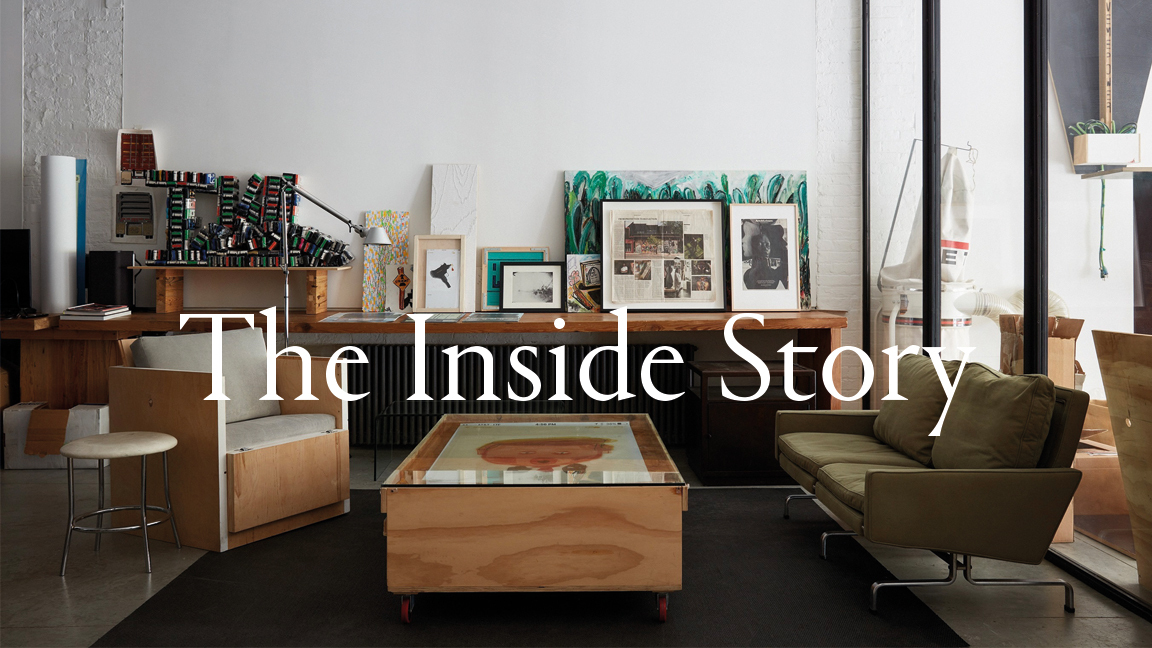
This downtown apartment couldn’t belong to anyone other than a New York artist. The space was imagined by local interior design studio Ries Hayes, comprising a studio on the ground level and the artist’s private residence above. But, in this imaginative, inspired space, the boundaries between his interior world and the art world blur.
The owner is an avid art collector as well as creator, and his apartment is a veritable gallery of works by up-and-coming talent. Even as the images that you see in this article were being shot, a piece by sculptor and painter Kennedy Yanko was being installed in the dining room.
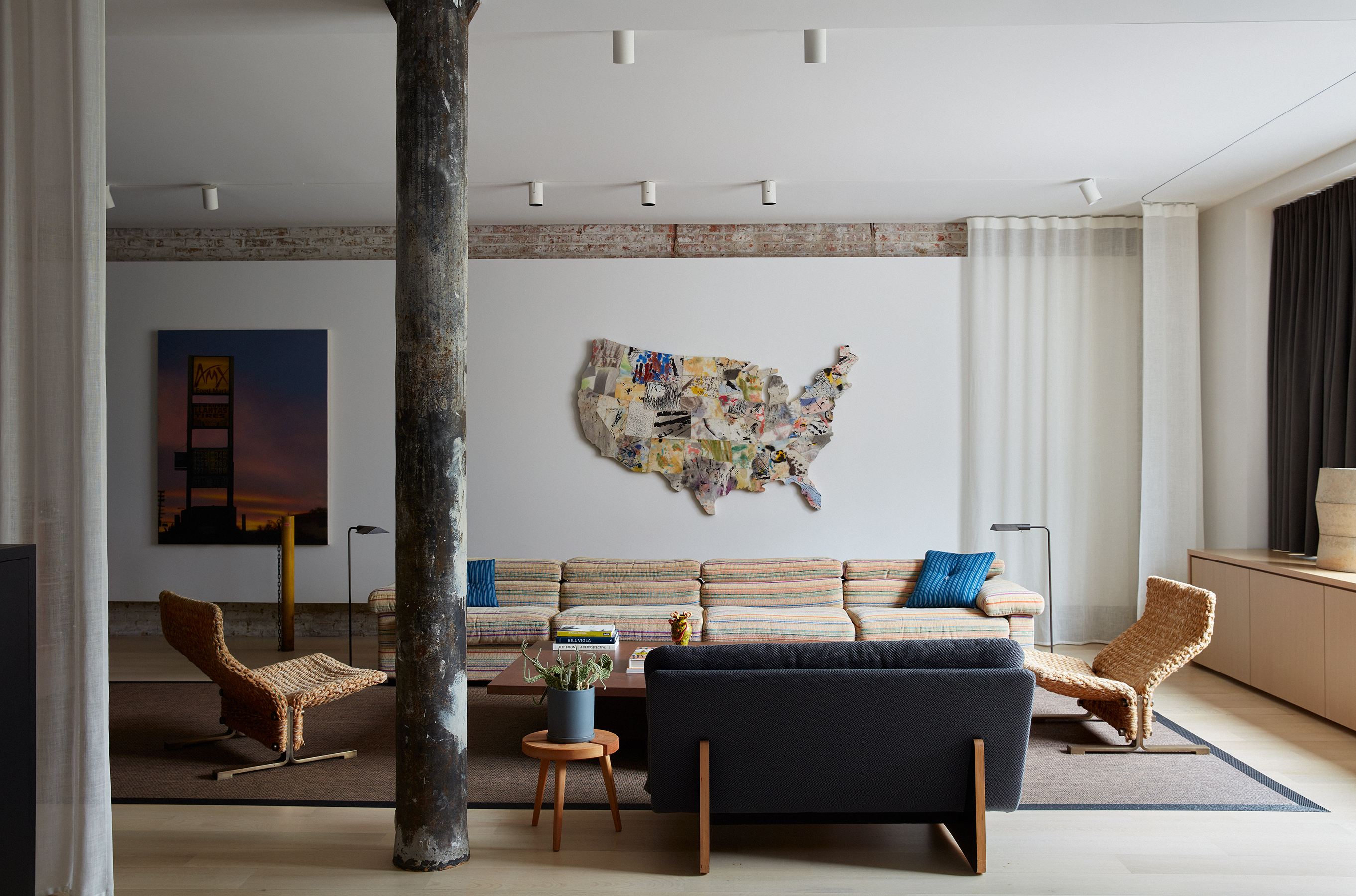
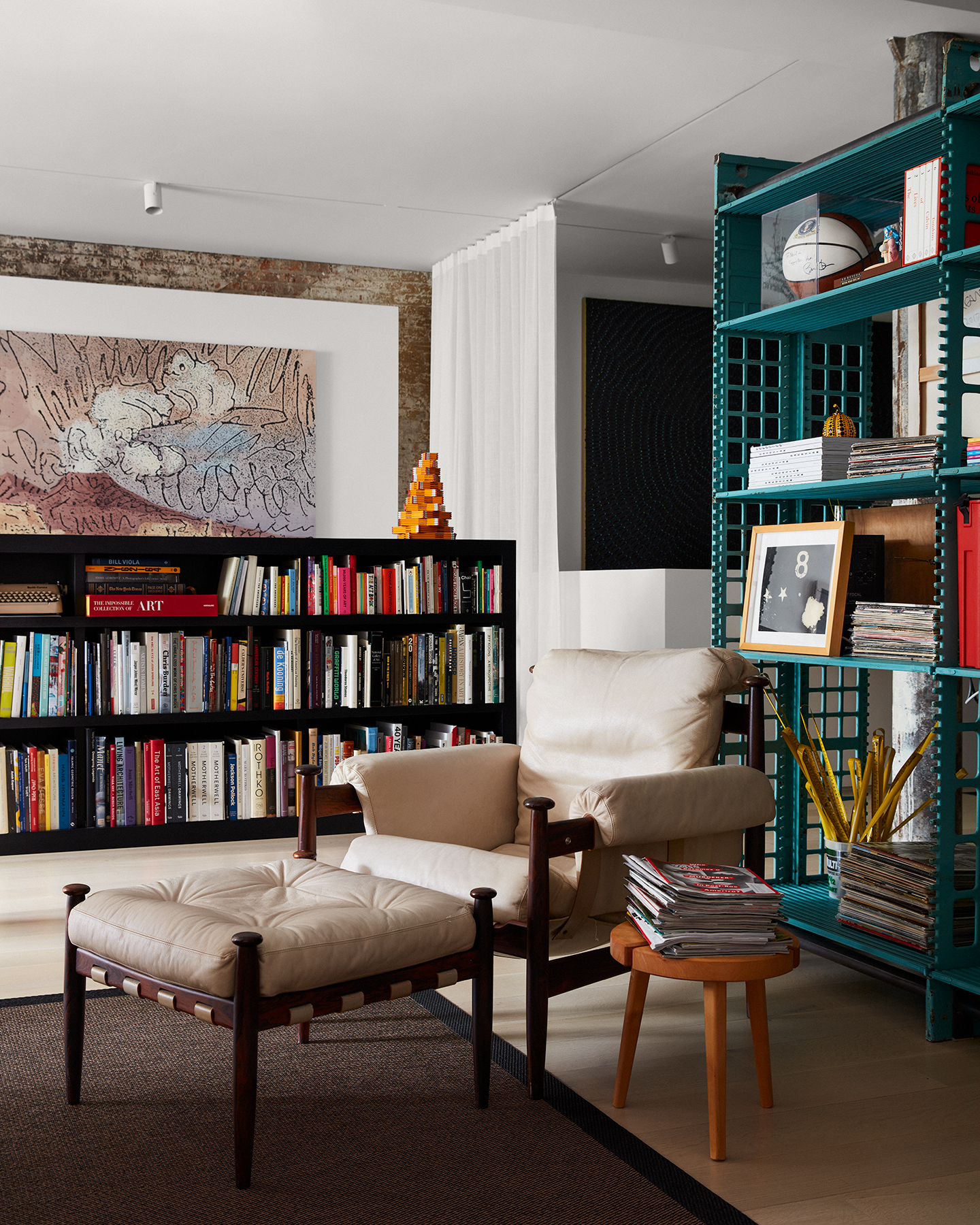
Flexibility is key. The living room features recessed tracks that allow curtain panels to divide the space, including the ability to close off an area containing a daybed by Pierro Chapo, which slides on slats to turn into a bed. The dining table by Jorgen Hoj (who worked with Poul Kjærholm) features leaves that can be added or removed depending on what is required of the space, and the original brick is clad in swathes of drywall, allowing art to be hung and changed regularly.
This apartment is, as mentioned, the artist's primary residence, and, as such, needed to be comfortable as well as flexible and utilitarian. He grew up in and around thoughtfully designed spaces and was inspired by the likes of George Nakashima, Ward Bennett and Edward Wormley, which can be felt in the space.
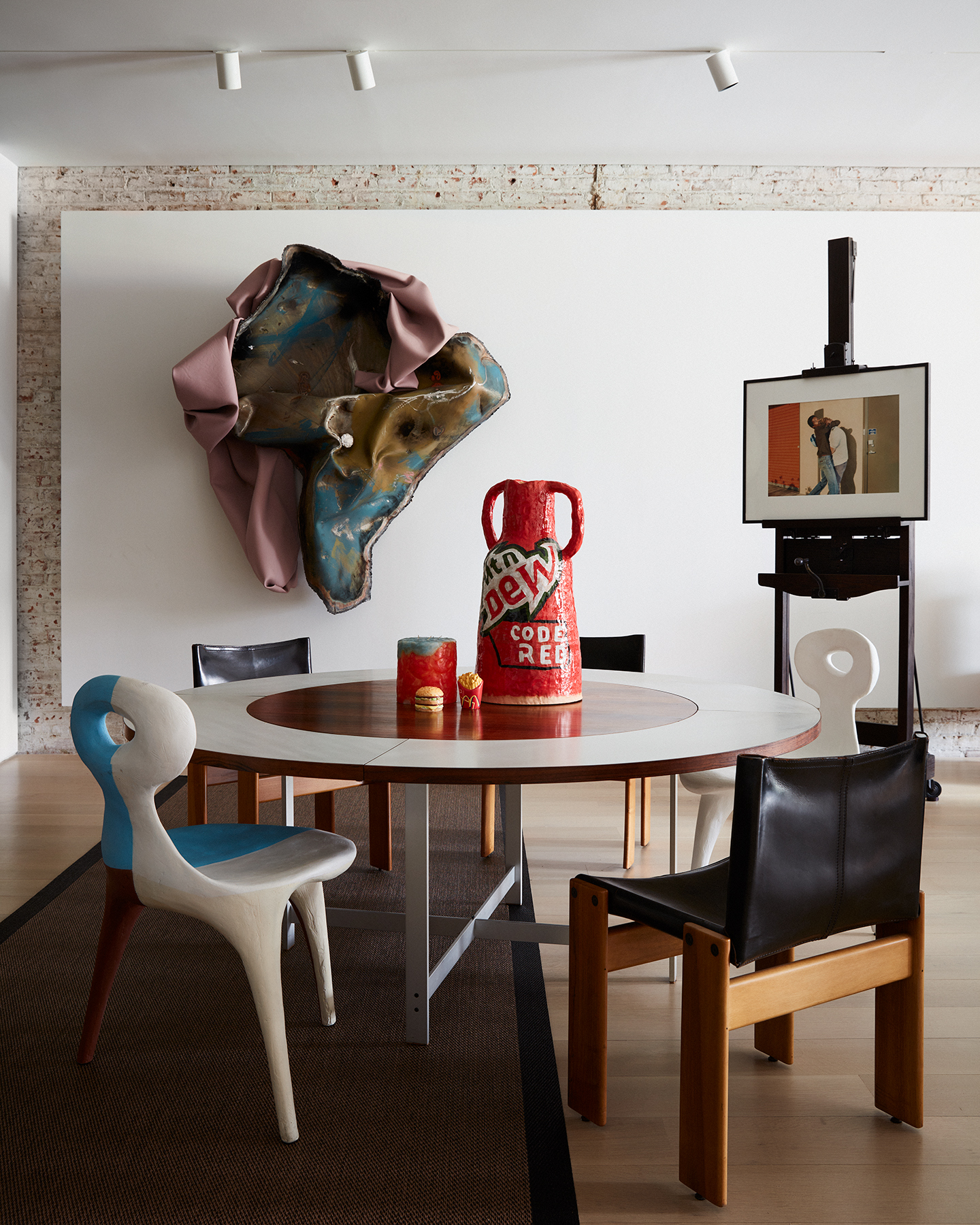
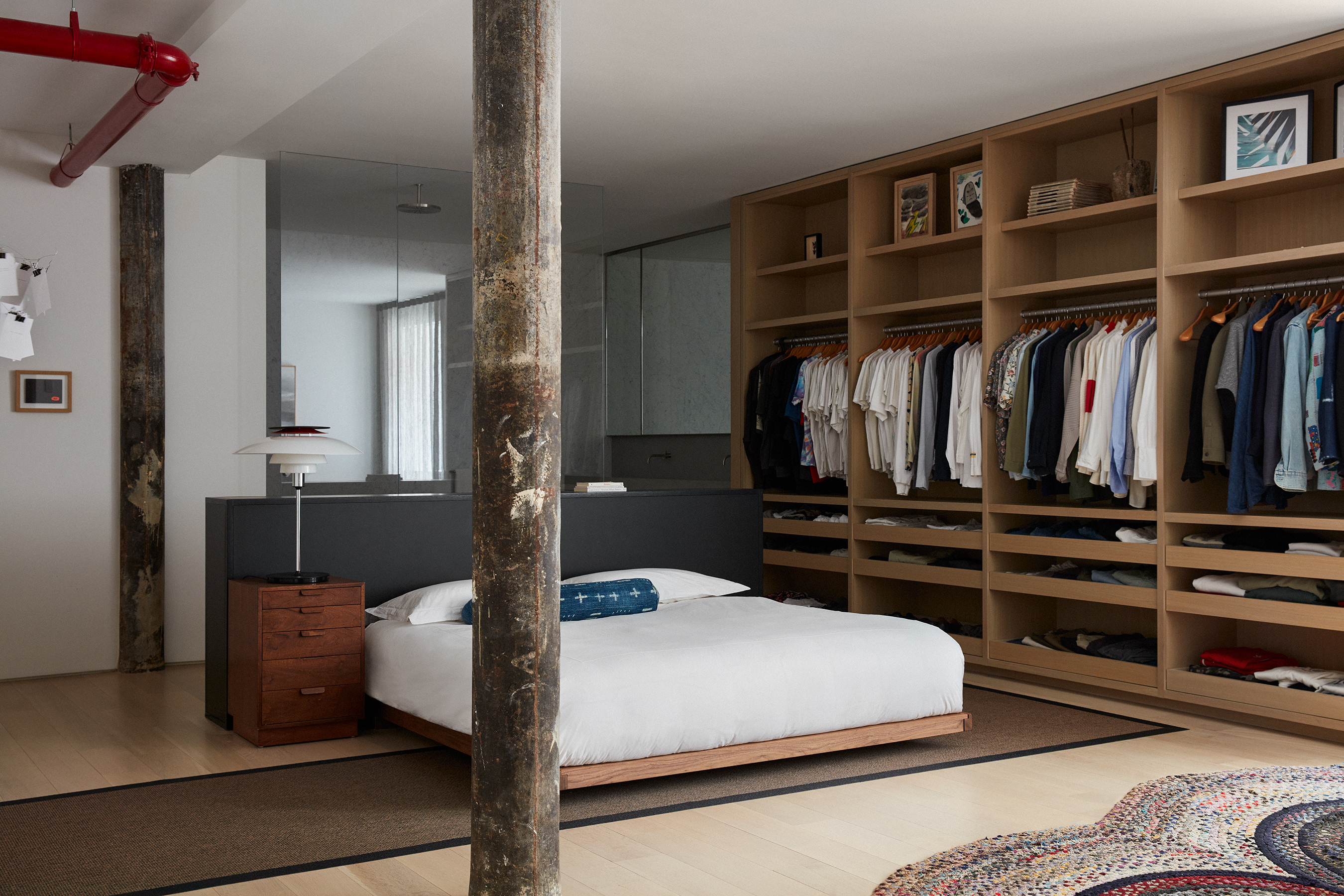
Flat, tatami-like mats have been used to define the apartment’s floorspace, while low-slung bookshelves clad in steel partition the bedroom and living room. Furniture pieces have been chosen to stand up to the statement of the space, rather than echoing any decade, movement or style: there are Nakashima and Bennett pieces from the artist's parents’ collection, as well as hand-glazed table lamps passed down from his grandfather.
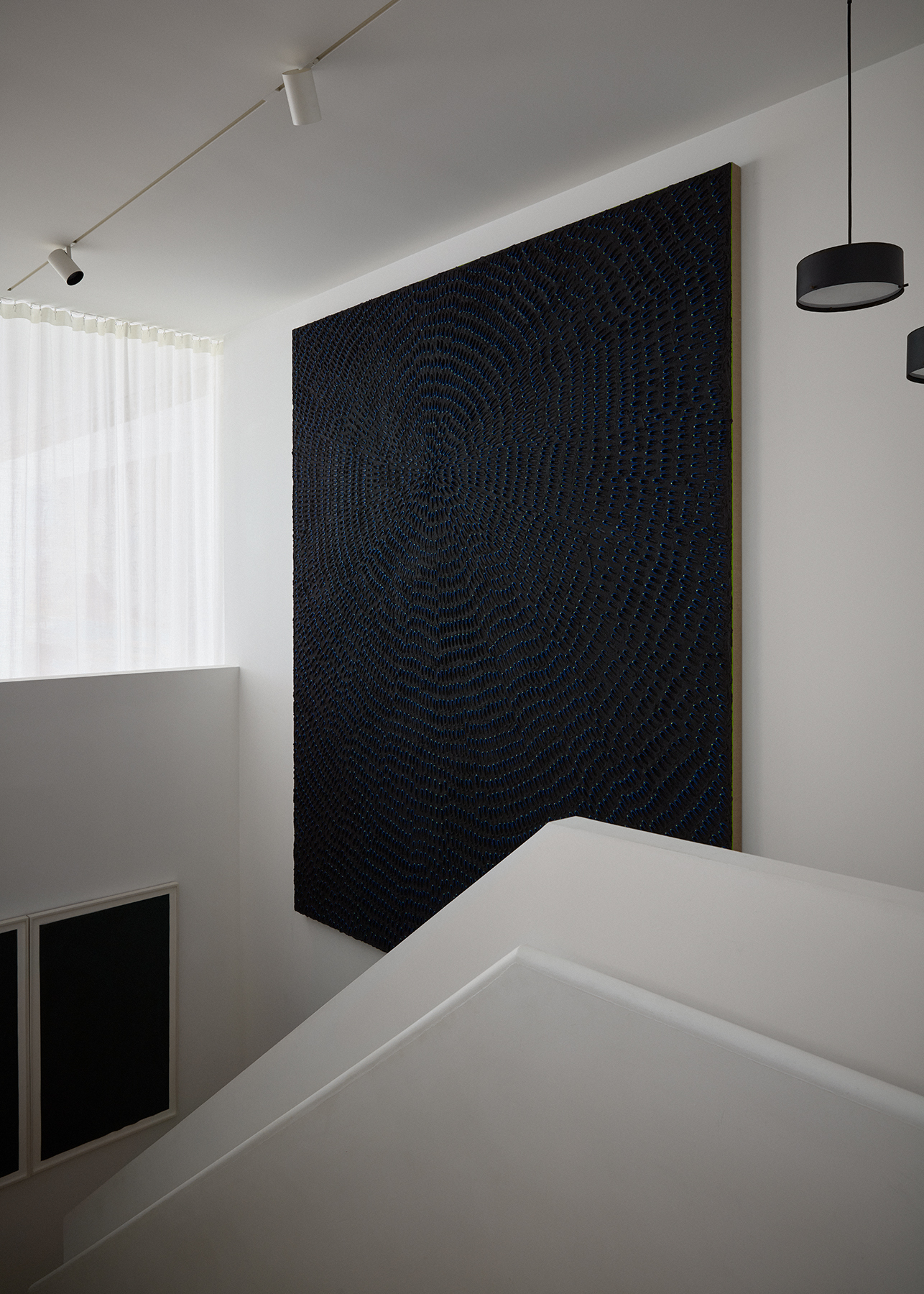
Purchased pieces include the coffee table, made by a Brooklyn furniture maker; the low bed frame, which was the work of a UK-based maker; a turn-of-the-century Snead Bookcase; the 1970s Afra and Tobia Scarpa ‘Erasmo’ sofa; and the Marzio Cecchi rope chairs. Early-American braided rugs contrast playfully with the modernity of the surroundings. A second sofa has been reupholstered in a patchwork textile made of recycled denim by Ries Hayes.
This apartment/studio is a fantastic example of how to navigate a dual-purpose abode – the complementary levels make for a galvanising space that fosters creativity. We spoke with its interior designer David Ries of Ries Hayes.
Receive our daily digest of inspiration, escapism and design stories from around the world direct to your inbox.
Q&A with interior designer David Ries of Ries Hayes
Wallpaper*: How do the studio and the apartment interact?
David Ries: The studio space exists to support our client’s work as an artist – a place for him to design, fabricate, engineer, collaborate and showcase his work. This space is on the ground level, in the old parking area for the loft, so it has a unique interaction with the streetscape.
The apartment exists as a respite from the physical task of creating art – a place to regroup and disconnect. It’s an area where the client is able to flex his creative muscles in other ways – playing music and cooking in that fabulous kitchen. It’s located above the studio, so you’re getting some natural light and less of that ground-level noise. There is also definitely more of an order to the apartment versus the lawlessness that the studio takes on due to the physical nature of creating art.
W*: How have you ensured that this space is flexible?
DR: Since the loft was so open, our client tasked us with the challenge of breaking it down, with the option to open it up again at a moment’s notice. The most noticeable application of flexibility is the semi-sheer, diaphanous curtains that can be moved to change the use of the room. But there are also furniture pieces that offer flexibility, such as the Pierre Chapo daybed, which slides out to become a queen-sized bed. We’ve stacked two button-tufted cushions, which can be laid out when the daybed is slid out to its fullest.
Additionally, there's the Jorgen Hoj (who worked with designer Poul Kjærholm) dining table, which has leaves that can be applied or removed, and the teal Library of Congress iron shelving, which divides the living and dining areas and has adjustable shelves for our client’s collection of books and objects.
W*: What are your favourite things about the space?
DR: Probably the homespun pieces that are such a contrast against the modern architectural gestures. The colourful, turn-of-the-20th-century braided and hooked American rugs are such unique pieces.
Additionally, the patchwork denim fabric that is seen on the curved sofa was created by [our] office – inspired by our client’s request for sustainable materials – using vintage Levi’s and Marc Jacobs denim to produce a material that was evocative of a Japanese Boro fabric.
Anna Solomon is Wallpaper’s digital staff writer, working across all of Wallpaper.com’s core pillars. She has a special interest in interiors and curates the weekly spotlight series, The Inside Story. Before joining the team at the start of 2025, she was senior editor at Luxury London Magazine and Luxurylondon.co.uk, where she covered all things lifestyle and interviewed tastemakers such as Jimmy Choo, Michael Kors, Priya Ahluwalia, Zandra Rhodes, and Ellen von Unwerth.
-
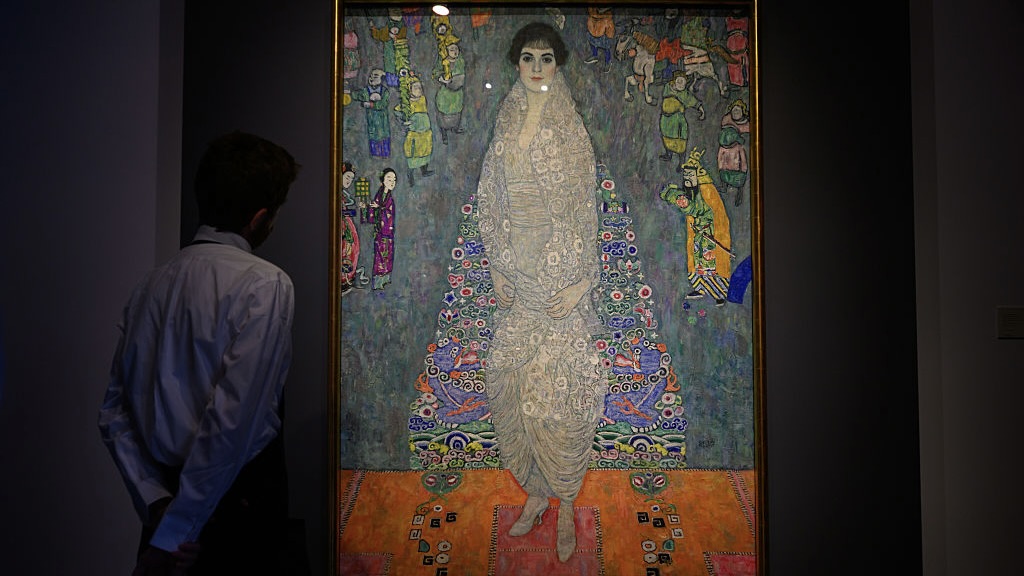 This Gustav Klimt painting just became the second most expensive artwork ever sold – it has an incredible backstory
This Gustav Klimt painting just became the second most expensive artwork ever sold – it has an incredible backstorySold by Sotheby’s for a staggering $236.4 million, ‘Portrait of Elisabeth Lederer’ survived Nazi looting and became the key to its subject’s survival
-
 New Leica Q3 Monochrom camera sees the world in black and white
New Leica Q3 Monochrom camera sees the world in black and whiteDefined by its crisp 60MP monochrome sensor, the Leica Q3 Monochrom is a camera designed for those who want to focus only on light, shadow and form
-
 How C Prinz shaped the gothic new world of Charli XCX
How C Prinz shaped the gothic new world of Charli XCXMulti-hyphenate director and movement artist C Prinz unpacks the physical, instinctive and often brutal creative process behind Charli XCX’s new 'Wuthering Heights' era
-
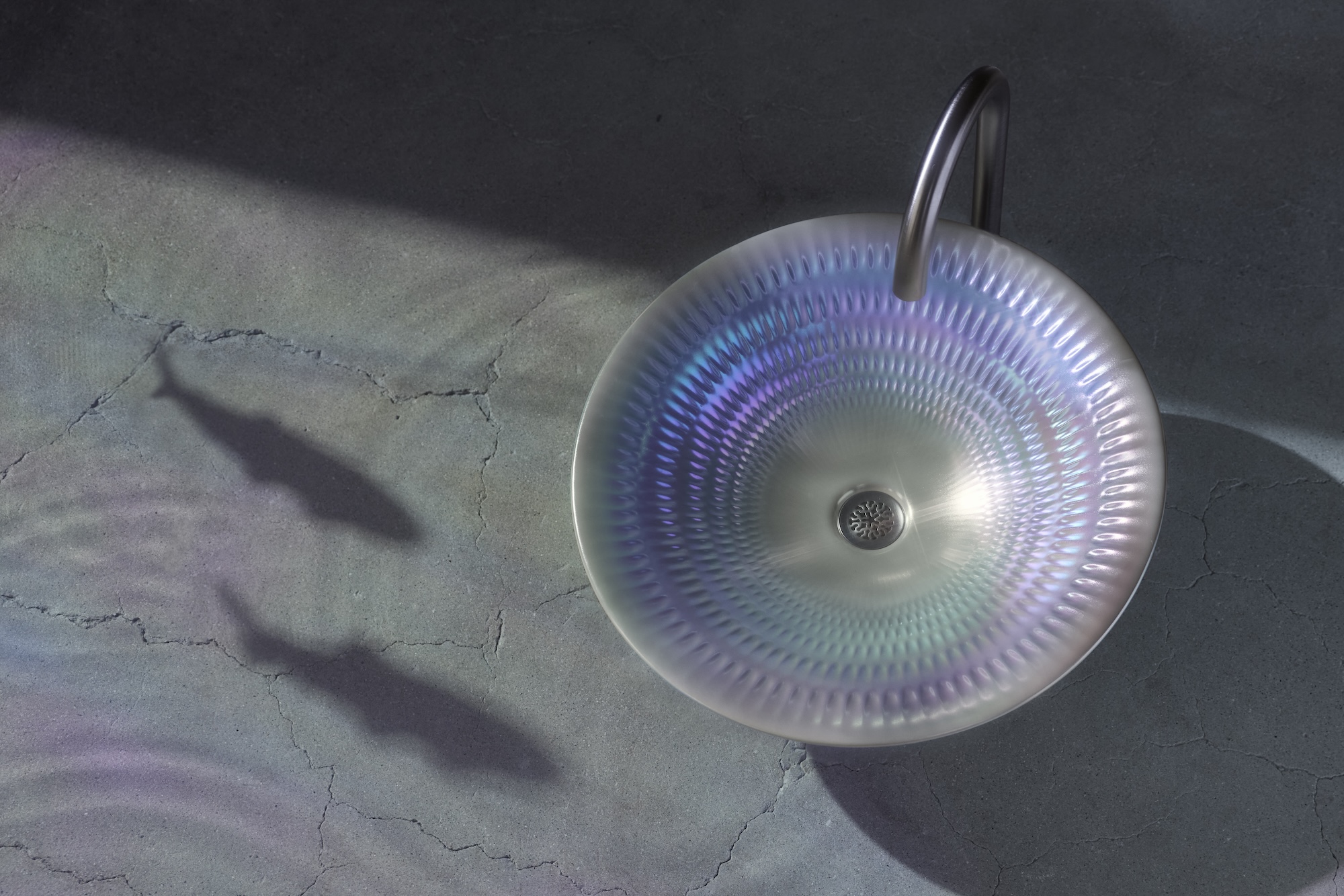 Kohler unveils ‘Pearlized’, an iridescent new bathroom finish with an under-the-sea backstory
Kohler unveils ‘Pearlized’, an iridescent new bathroom finish with an under-the-sea backstoryArtist David Franklin was inspired by glimmering fish scales and sunsets for this mesmerising debut
-
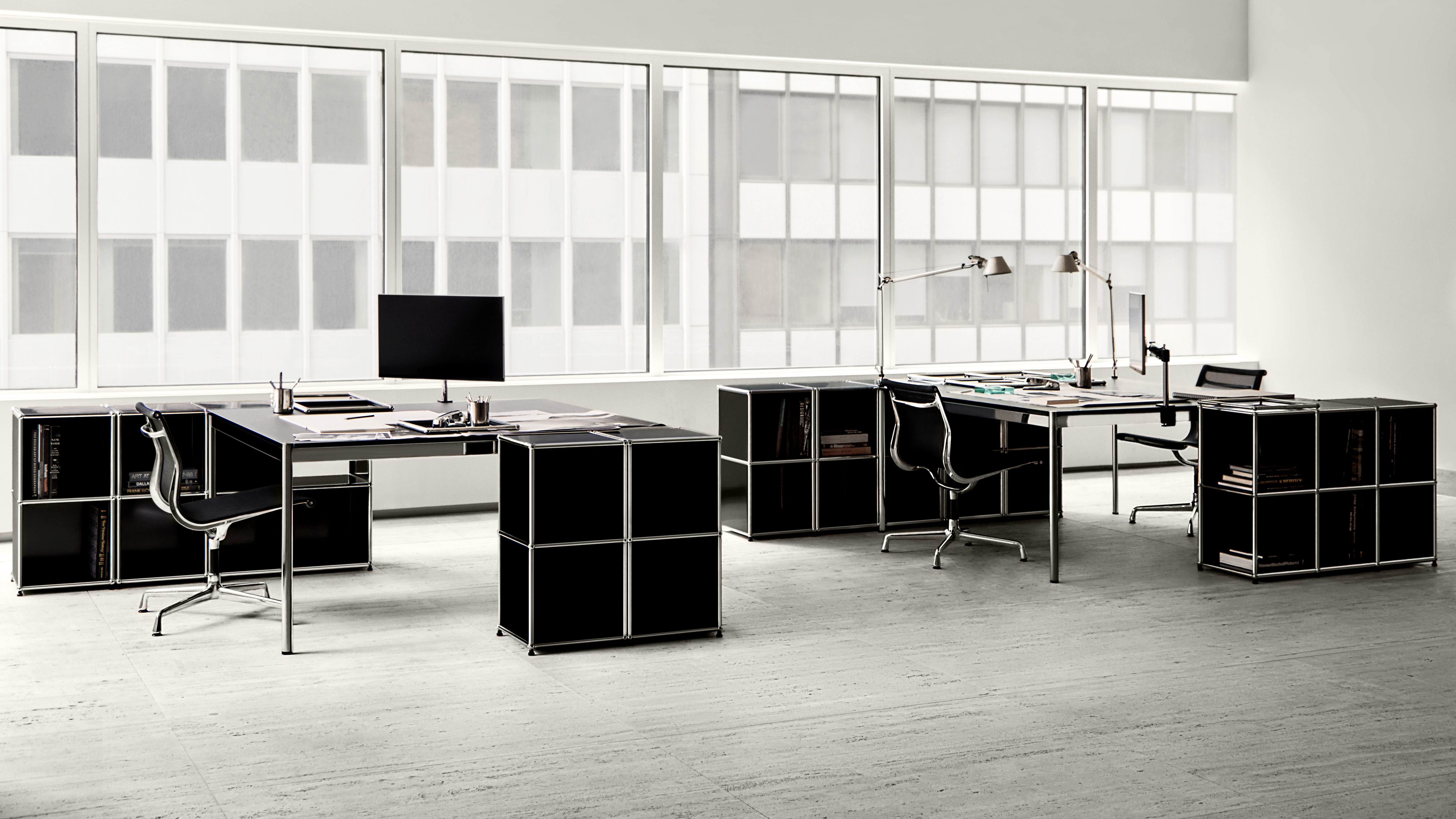 USM and Alexander May Studio present a monochrome meditation on the modern workspace
USM and Alexander May Studio present a monochrome meditation on the modern workspaceThese six flexible workspaces ‘encourage clarity of thought, calm, and self-definition’, says New York designer Alexander May of his partnership with the modular furniture brand
-
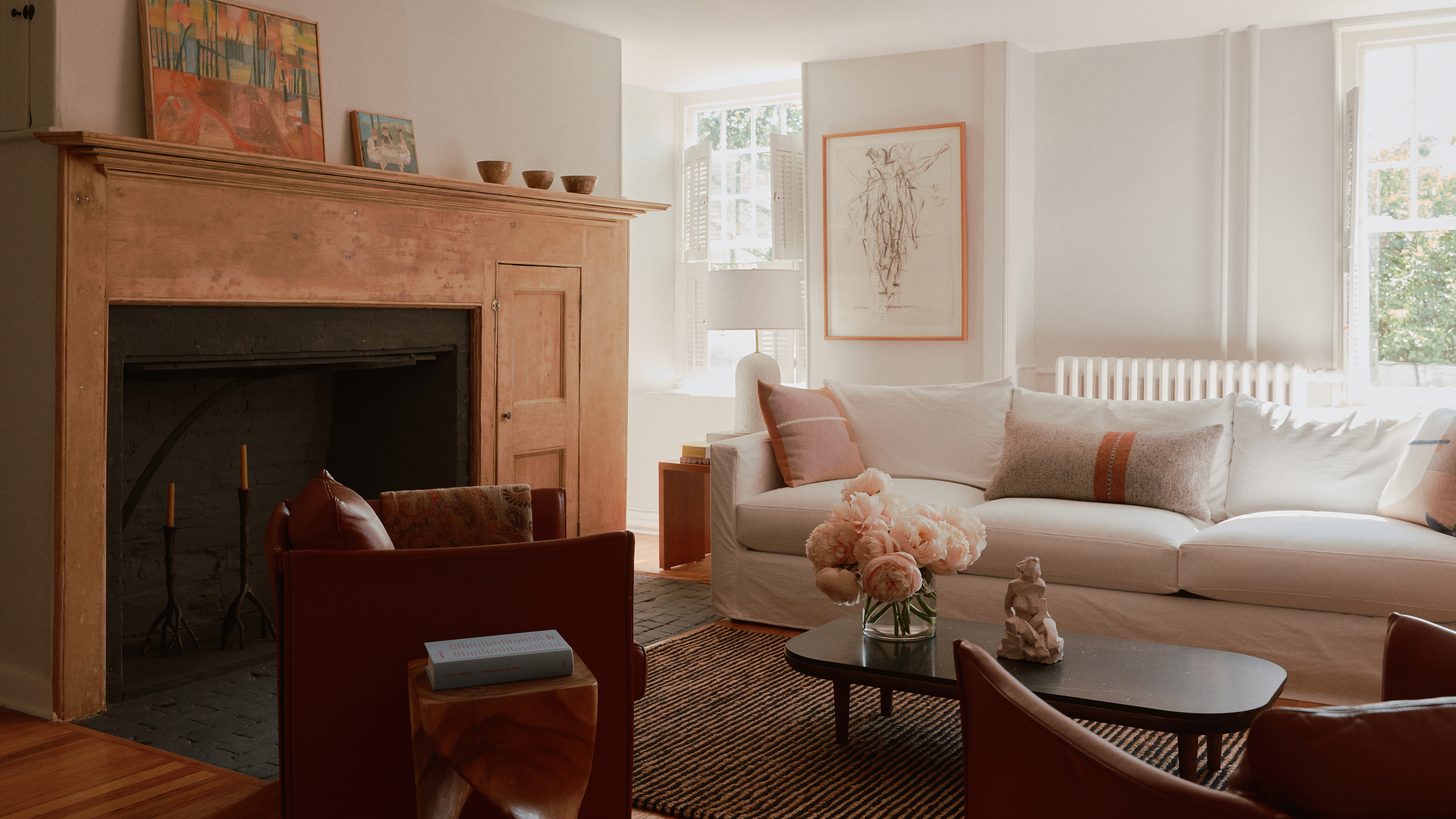 Once overrun with florals, this old Hudson farmhouse is now a sprawling live-work artist’s retreat
Once overrun with florals, this old Hudson farmhouse is now a sprawling live-work artist’s retreatBuilt in the 1700s, this Hudson home has been updated into a vast creative compound for a creative, yet still exudes the ‘unbuttoned’ warmth of its first life as a flower farm
-
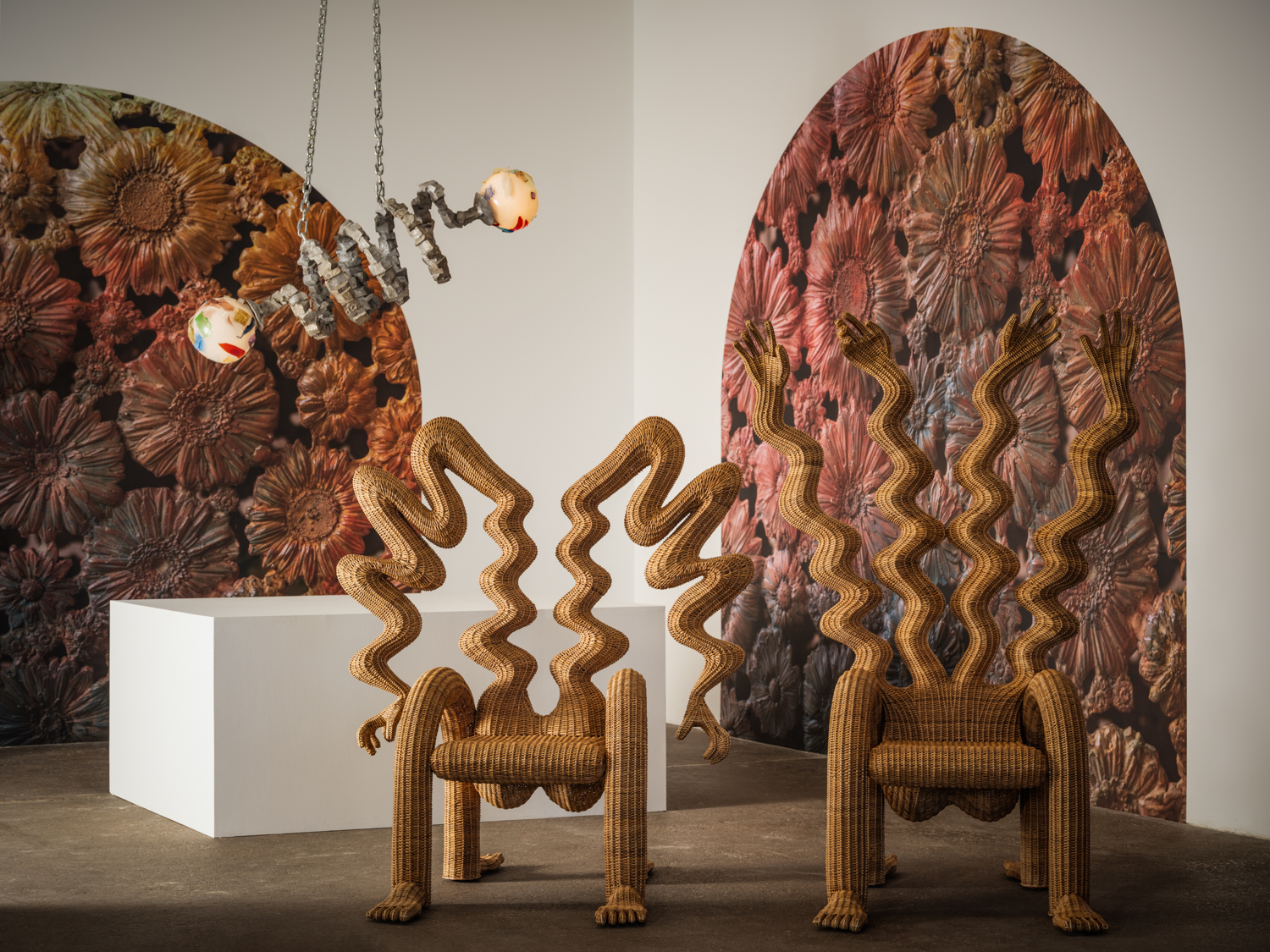 Chris Wolston’s first-ever museum show bursts with surreal forms and psychedelic energy
Chris Wolston’s first-ever museum show bursts with surreal forms and psychedelic energy‘Profile in Ecstasy,’ opening at Dallas Contemporary on 7 November, merges postmodern objects with Colombian craft techniques
-
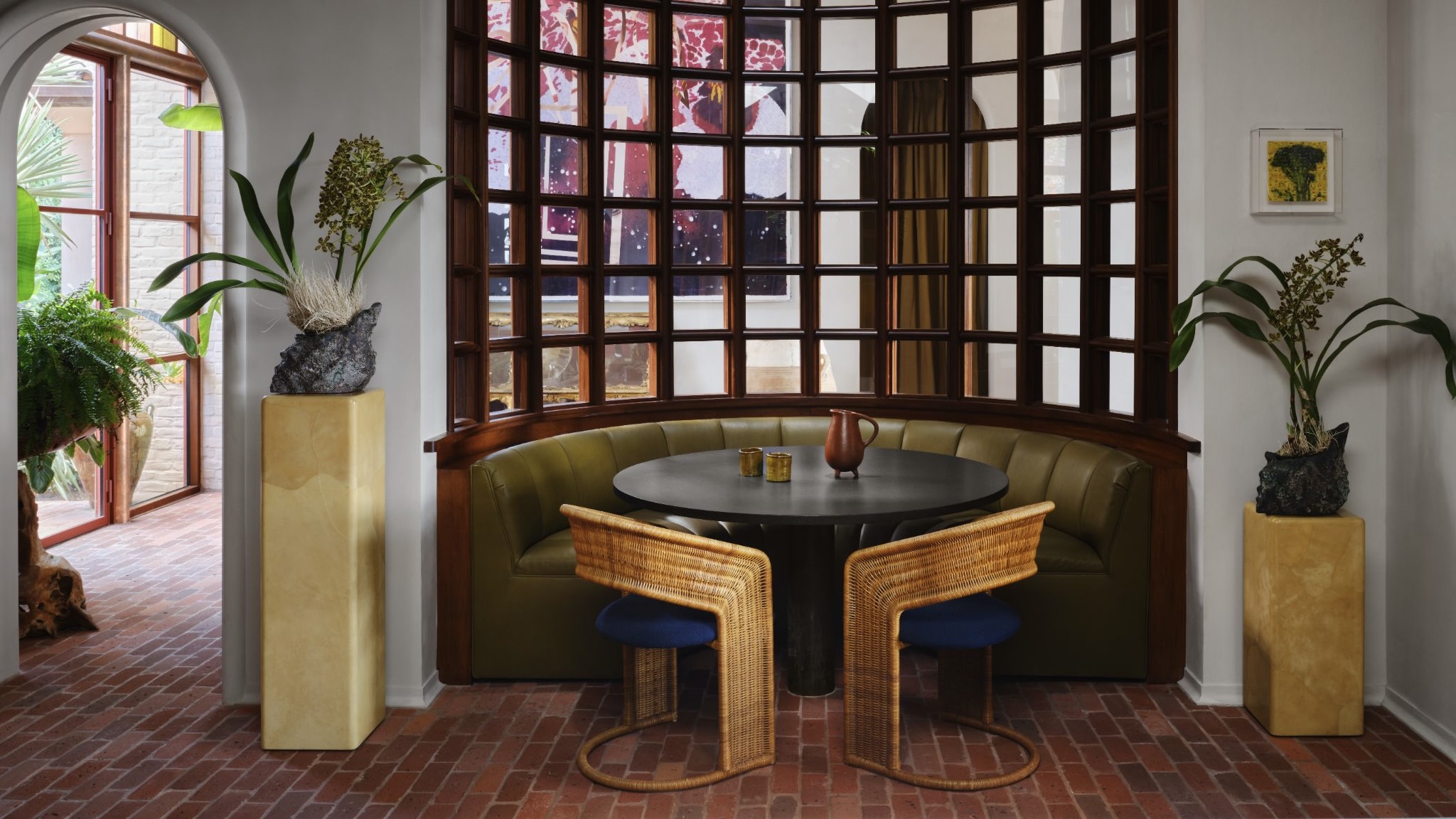 How an Austin home went from 'Texan Tuscan' to a lush, layered escape inspired by the Alhambra
How an Austin home went from 'Texan Tuscan' to a lush, layered escape inspired by the AlhambraThe intellectually curious owners of this Texas home commissioned an eclectic interior – a true ‘cabinet of curiosities’ layered with trinkets and curios
-
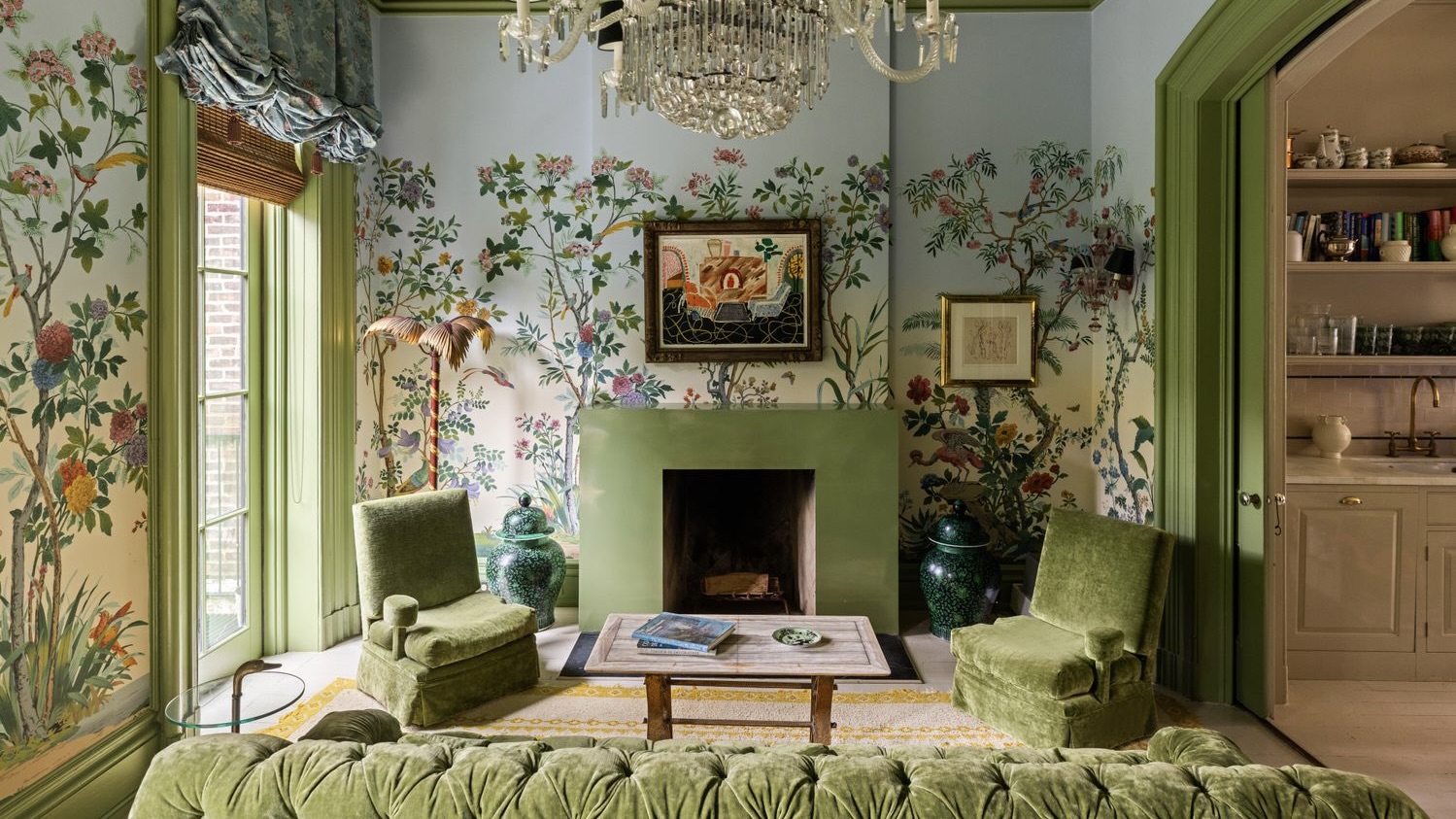 Inside Lily Allen and David Harbour's maximalist Brooklyn townhouse, now on the market for $8 million
Inside Lily Allen and David Harbour's maximalist Brooklyn townhouse, now on the market for $8 millionThe former couple have listed their Billy Cotton-renovated Carroll Gardens brownstone, which has been immortalised in Allen’s new album ‘West End Girl’
-
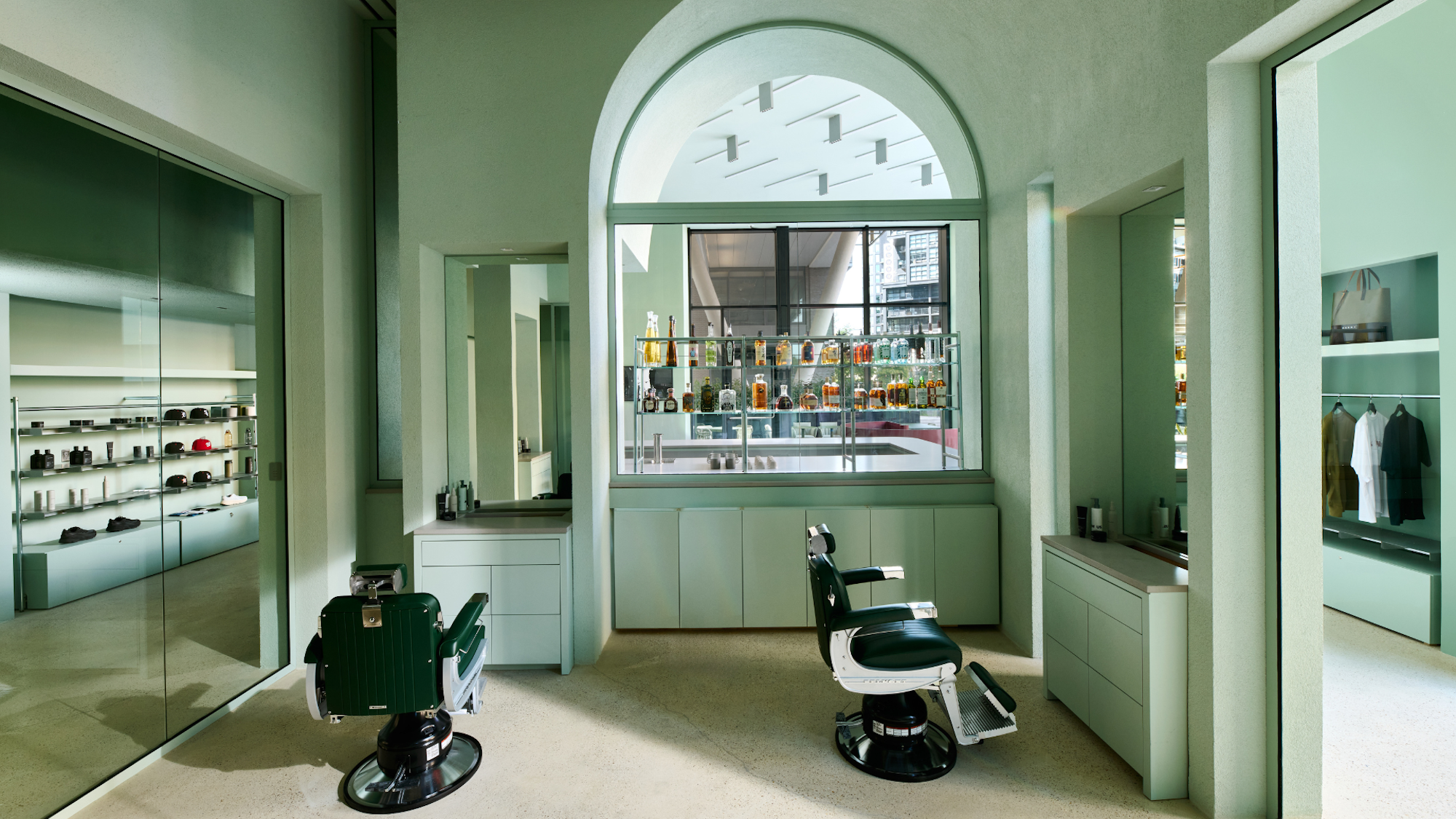 With a secret members’ club, this Washington, DC barbershop is a ‘theatre of self-care’
With a secret members’ club, this Washington, DC barbershop is a ‘theatre of self-care’At Manifest 002, come for a haircut; stay for the boldly hued social spaces designed by INC Architecture & Design
-
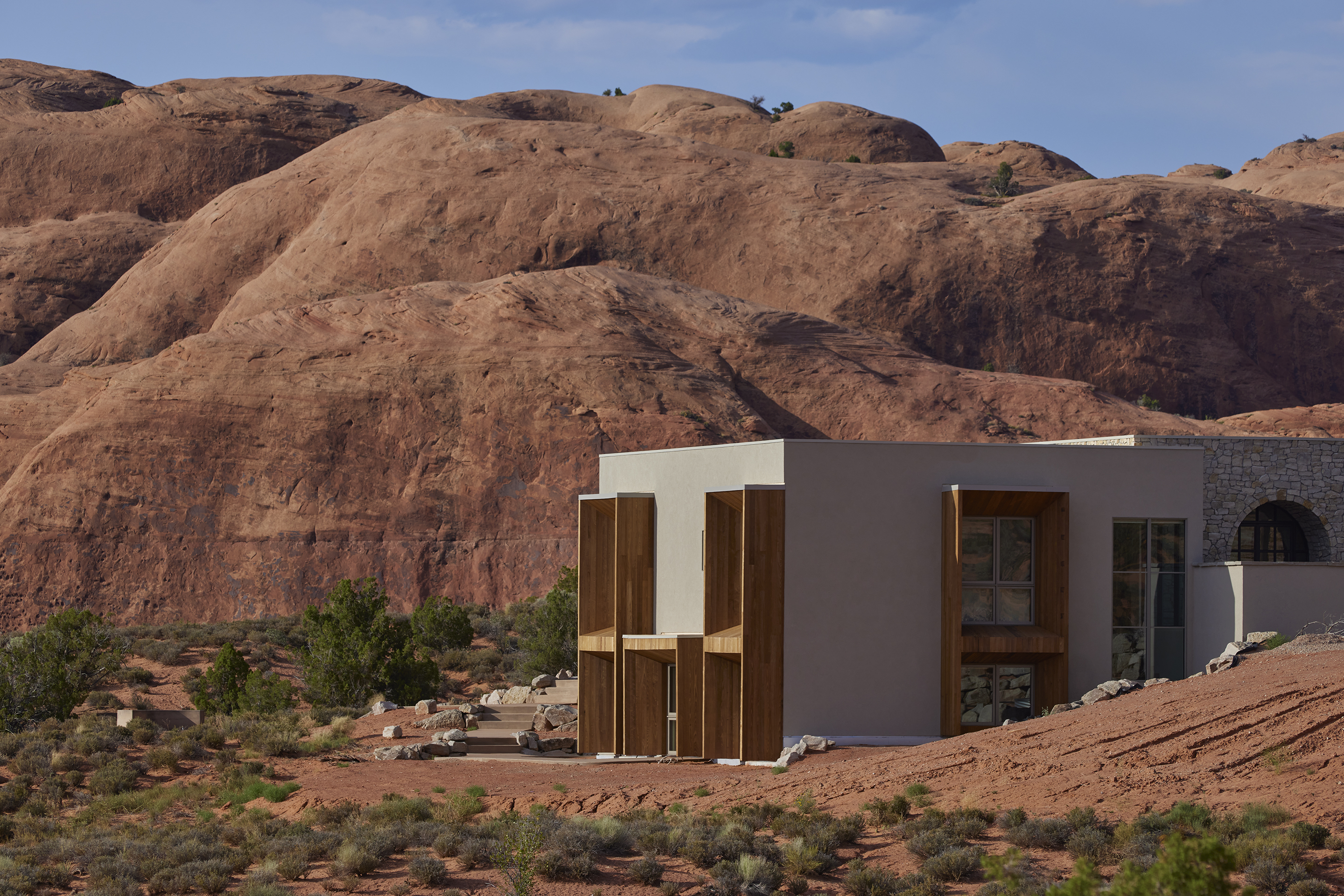 Step inside a ‘dream desert sanctuary’ tucked into Moab's rust-red landscape
Step inside a ‘dream desert sanctuary’ tucked into Moab's rust-red landscapeSusannah Holmberg designed this home to harmonise with the extreme climate and dramatic surroundings of Utah’s Moab desert. 'The landscape is everything'